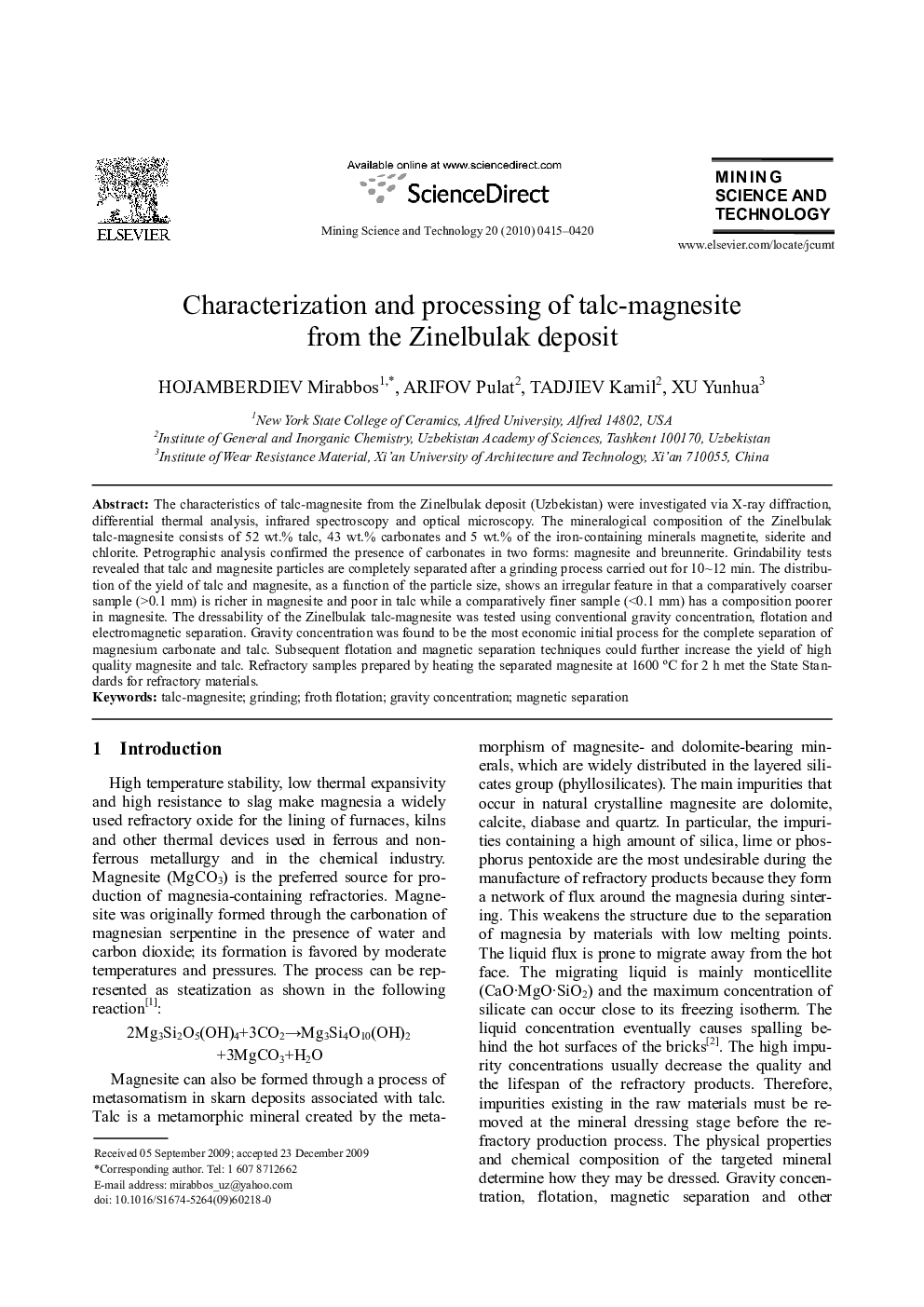| Article ID | Journal | Published Year | Pages | File Type |
|---|---|---|---|---|
| 294645 | Mining Science and Technology (China) | 2010 | 6 Pages |
The characteristics of talc-magnesite from the Zinelbulak deposit (Uzbekistan) were investigated via X-ray diffraction, differential thermal analysis, infrared spectroscopy and optical microscopy. The mineralogical composition of the Zinelbulak talc-magnesite consists of 52 wt.% talc, 43 wt.% carbonates and 5 wt.% of the iron-containing minerals magnetite, siderite and chlorite. Petrographic analysis confirmed the presence of carbonates in two forms: magnesite and breunnerite. Grindability tests revealed that talc and magnesite particles are completely separated after a grinding process carried out for 10∼12 min. The distribution of the yield of talc and magnesite, as a function of the particle size, shows an irregular feature in that a comparatively coarser sample (>0.1 mm) is richer in magnesite and poor in talc while a comparatively finer sample (<0.1 mm) has a composition poorer in magnesite. The dressability of the Zinelbulak talc-magnesite was tested using conventional gravity concentration, flotation and electromagnetic separation. Gravity concentration was found to be the most economic initial process for the complete separation of magnesium carbonate and talc. Subsequent flotation and magnetic separation techniques could further increase the yield of high quality magnesite and talc. Refractory samples prepared by heating the separated magnesite at 1600 °C for 2 h met the State Standards for refractory materials.
